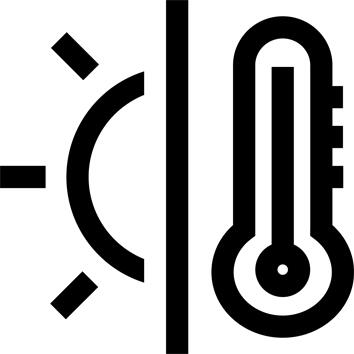Details for thermal insulation
One-piece, wet-type neoprene 5 mm with back closure.
Watertight seams with GBS (GBS Glued & Blind Stitched) glued/sewn assembly.
Once the thin film of water (pulled in through the ZIP) is trapped between your body and the suit, there is no water circulation and therefore no water renewal.
It's this film of water that provides your thermal insulation.
Smooth rolled edges at wrists, ankles and neck for maximum watertightness.
Zipper construction and suit assembly
The back zipper is designed to have two overlapping panels of smooth neoprene to minimize water ingress.
The wetsuit's seams are GBS (Glued and Blind Stitched): the neoprene is first glued, then stitched for added strength (the needle does not go all the way through the neoprene to prevent water infiltration).
Carabiner on upper thigh for attaching accessories.
Adapted to women's morphology!
Neoprene wetsuits need to be worn close to the body to be effective, which is why SUBEA has developed specific sizes for the female body. These products are designed, prototyped and tested by women, for women!
Freedom of movement / Combination threading
One-piece with separate hood (not included). Underarm panels and extremities in stretch neoprene (very soft, elastic neoprene) to facilitate morphological adaptability and to adapt as much as possible to different body shapes.
Leg and arm extremities are also in stretch neoprene to facilitate donning.
No seams under the armpits to facilitate arm mobility.
Wear limitation
The suit is fitted with printed reinforcements at the knees.
Prints are also present on the friction zones associated with the stabilizer vest (shoulders and lower back).
This also helps to hold it better on the body and prevent it from slipping down the sides.
Wrist protection to prevent computer rotation.
Thermal performance class
This scuba diving suit offers you thermal protection tested by the independent institute INPP (Marseille-France) to validate its compliance with the current standard (NF EN 14225-1:2017).
This suit is CLASS C approved:
A (+7°C/+12°C / +45°F/+54°F)
B (+10°C/+18°C / +50°F/+64°F)
C (+16°C/+24°C / +61°F/+75°F)
D (+22°C/+30°C / +72°F/+86°F).
Modulate your thickness, modulate your heat!
When diving, the cold is our worst enemy! You need thermal protection to match the water temperature. To avoid having a wetsuit for every condition, the concept has been developed around 5 products that can be combined with your wetsuit depending on the temperature.
You can thus complete your thermal insulation with a balaclava, a neoprene top (mouse), a top with balaclava, an undershorty 1 mm or an overshorty 5.5 mm.
What is a wet suit?
This type of wetsuit is the most common on the market. Its purpose is not to act as a barrier to the water, but rather to trap it and allow your body to warm it up, creating a thermal buffer between you and the outside world. Made from neoprene - a rubber polymer filled with air bubbles - these wetsuits come in thicknesses from 0.5 to 7 mm . As such, they make excellent diving suits because they are flexible and modular.
Tips for putting on your wetsuit
Slip your foot into a plastic bag, then tuck your leg into your wetsuit. Your foot will pop out fully and snugly! To adjust it, ask a third party to blow into your sleeve from the wrist. The air intake inflates the inside of the neoprene suit and instantly lifts it off your skin. You can then easily make final adjustments.
Tips for maintaining your wetsuit
1) After each session, soak the suit in clear water on both the inside and outside.
2) Use a bactericidal solution to sanitize.
3) Rinse well in clear water.
4) Dry on a wide hanger in a shaded, well-ventilated area. Caution: the sun discolors the textile parts of the suit and accelerates the aging of the neoprene. Zippers can be cleaned with a toothbrush, and lubricated with silicone grease.












